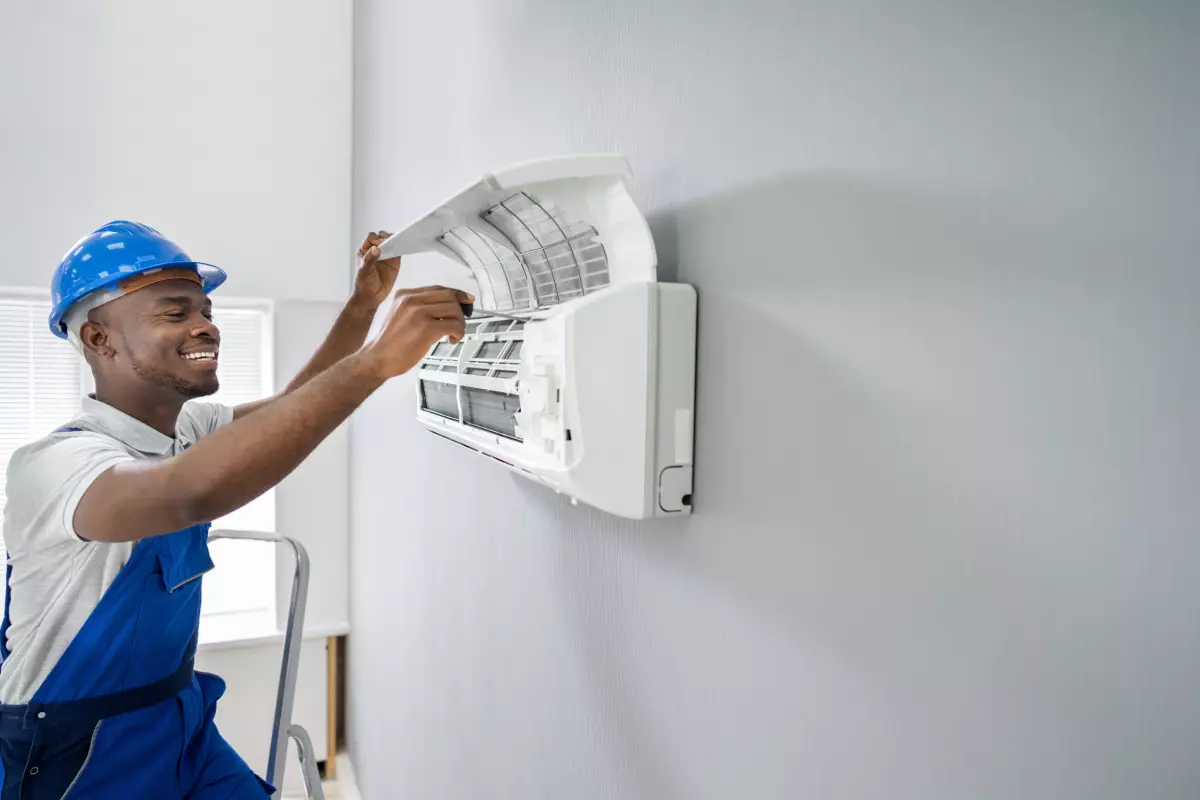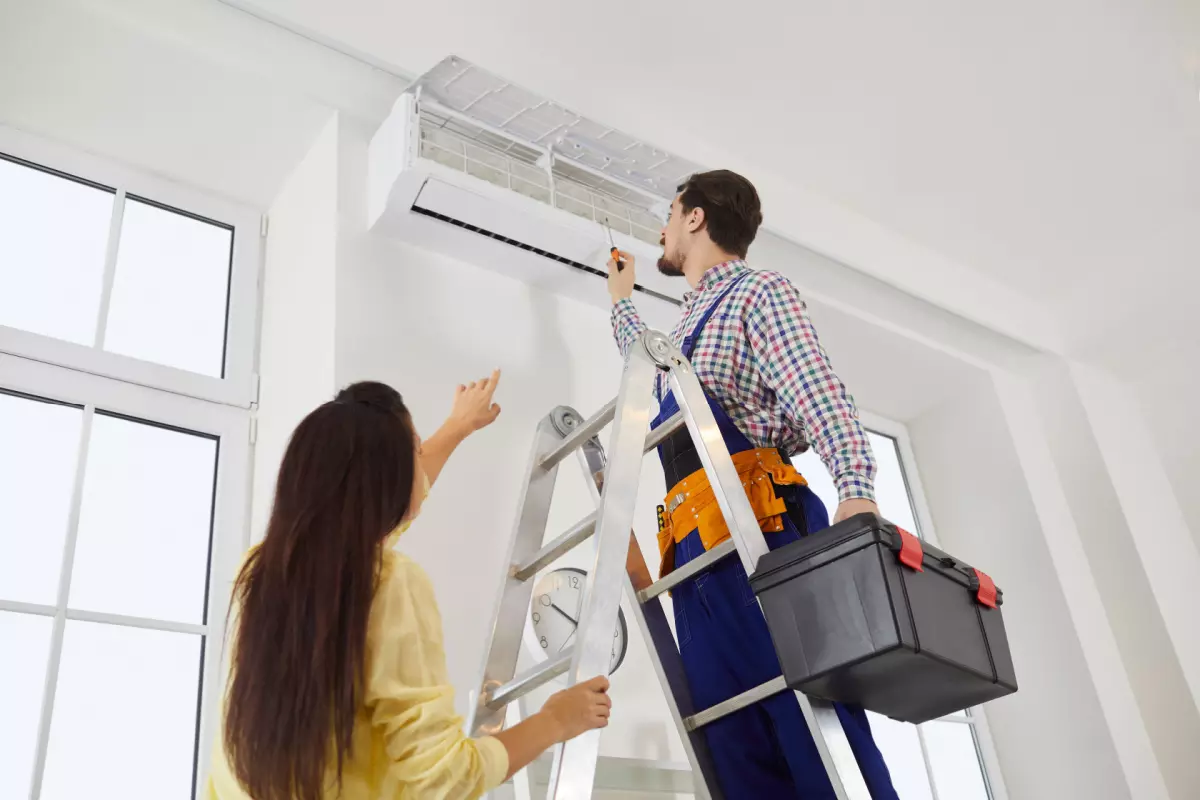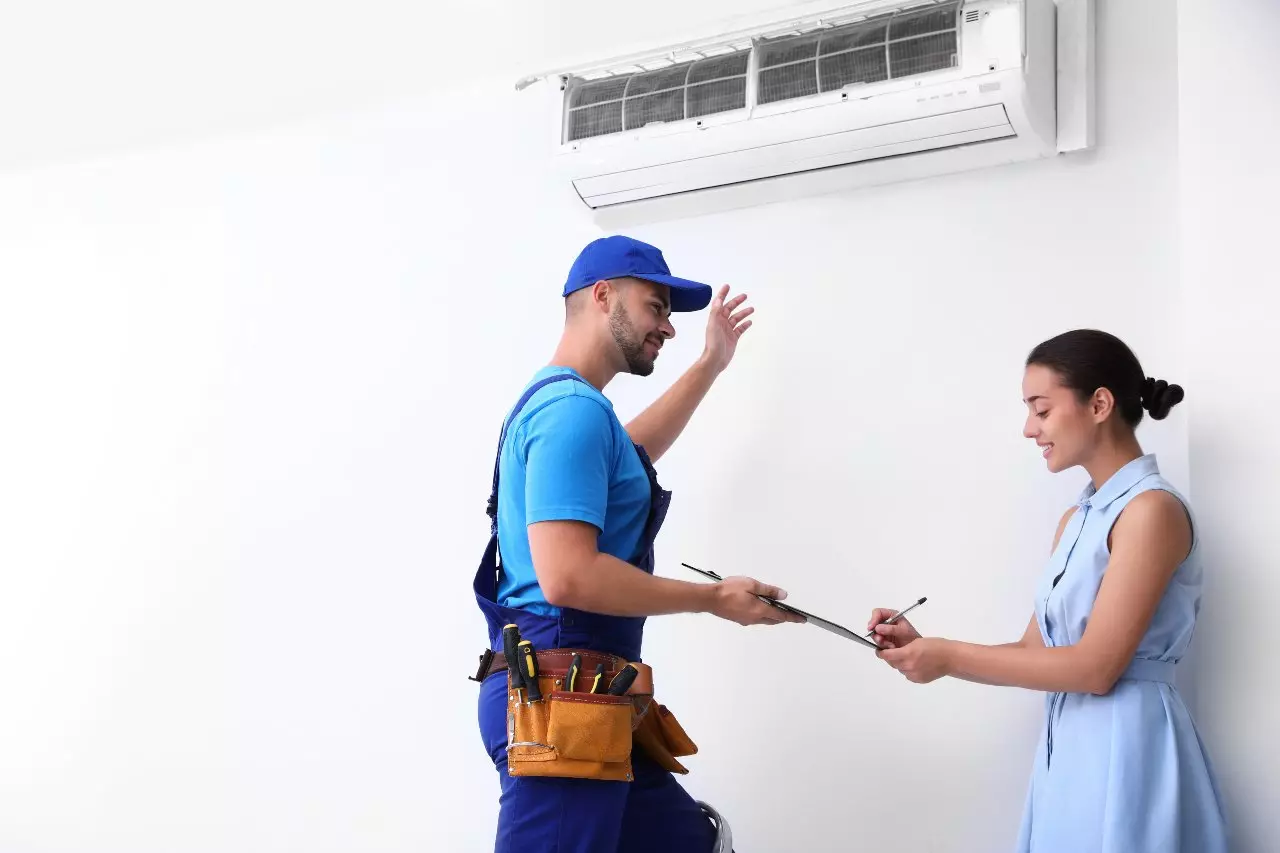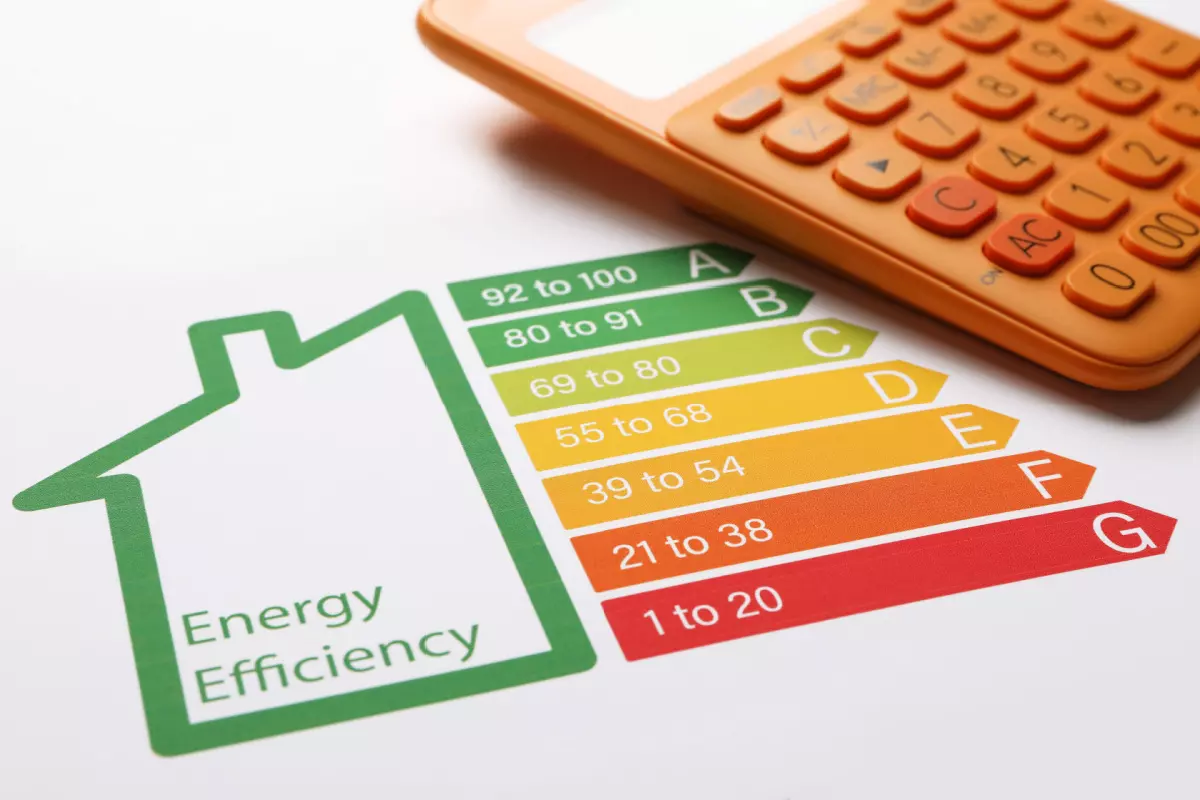Navigating the HVAC industry often involves a relentless pursuit of new customers. However, focusing solely on customer acquisition might mean missing out on a frequently neglected metric: the average order value (AOV).
So, let’s dive into AOV, its calculation, and strategies to increase it.
What Is AOV (Average Order Value)?
Average order value, or AOV, is the average amount a customer spends during a single transaction with your HVAC business.

This metric provides insight into your customers’ buying habits – important information for adjusting your sales, marketing, and pricing strategies. The goal is to encourage customers to spend more on each transaction, thus increasing your AOV.
How To Calculate AOV?
Understanding average order value and its calculation is simple and integral to evaluating your HVAC business’s health and profitability. To calculate AOV, you’ll need to divide your total revenue by the number of projects. Doing this gives you an average value for each transaction made within a specific period.
Let’s break this down further:
AOV Formula
The AOV formula in its simplest form is:
| AOV = Total Revenue / Number of Projects |
The total revenue accounts for the sum you made from all your sales within a given period. At the same time, the number of projects represents the total transactions made within the same timeframe.
To illustrate this, let’s use a hypothetical example:
Imagine your HVAC company generated $500,000 monthly revenue from 50 projects. Applying the formula:
| $500,000 / 50 = $10,000 |
The AOV for that month would be $10,000. This means that, on average, customers spent $10,000 on each transaction with your business.
What is a Good AOV?
A “good” AOV isn’t one-size-fits-all and can fluctuate based on the size of the business, its services, costs, and more. For typical residential HVAC installations in the U.S., a good AOV can range from $5,000 to $10,000.
While the AOV will vary, a “good” AOV for an HVAC company will depend on the following:
- Service Offerings: An HVAC company’s scope and type of services greatly influence its AOV. Companies primarily offering routine maintenance or minor repairs typically have a lower AOV. In contrast, those focusing on full-system installations or replacements generally boast a higher AOV.
- Location Factors: Geographic and economic variables like the cost of living can impact the AOV. For instance, HVAC companies operating in high-cost-of-living areas might command higher AOVs than those in more affordable regions.
- Pricing Strategies: Having a strong pricing strategy can greatly influence AOV. For example, bundling services together at a slightly lower price can increase the AOV by encouraging customers to make more significant purchases simultaneously. Tiered pricing, offering different service levels at varying price points, can incentivize customers to choose higher-priced options, potentially raising the AOV. However, make sure not to lower your prices too much, as undercharging can be a detriment to your revenue.
Strategies to Increase Average Order Value in HVAC
Increasing your HVAC business’s average order value can contribute to revenue growth without costing you more in customer acquisition marketing.
Studies show that acquiring a new customer is five times more costly than retaining an existing one. So, measuring customer loyalty and encouraging your existing customers to make larger purchases each time they contract with your business may be more cost-effective.

Here are some effective strategies to consider:
Upselling
Upselling is a valuable sales strategy that encourages customers to purchase a more expensive, upgraded, or premium version of an item or service. In the HVAC industry, an upselling opportunity might look like this:
A customer calls to get their old HVAC unit replaced. Instead of replacing it with a similar model, you recommend a higher-end unit that’s more energy-efficient or has advanced features such as a programmable thermostat or an air purification system.
To do this effectively, you need to understand the customer’s needs, educate them about the benefits of the higher-end model, and ensure it aligns with their long-term goals, such as saving on energy costs or improving indoor air quality. It can also be beneficial to use suggestive selling techniques to guide customers toward higher-value services.
With each successful upsell, you’re not only providing value to your customers but also growing your revenue and positively impacting your AOV, contributing to the financial health of your business.
Cross-Selling
Cross-selling is another effective strategy to elevate your HVAC company’s AOV. This approach involves recommending supplementary products or services that enhance a customer’s primary purchase—and increase your revenue.
For example, you could cross-sell a discounted annual maintenance plan when a customer purchases a new HVAC system. This addition provides the customer with convenience and ongoing peace of mind, increasing the revenue generated from that transaction and thereby lifting your AOV. If you have a brick-and-mortar store, cross-merchandising is a similar avenue.
Creating Bundles or Packages
Bundling sales and packages combine multiple products or services into a single transaction, often priced lower than if purchased individually. For customers, it brings the dual benefits of convenience and savings, which can encourage larger purchases, thus improving your AOV.
For HVAC businesses, this might involve creating a comprehensive “Comfort Bundle” that includes HVAC system installation, routine maintenance, and necessary repairs. Compared to buying each service separately, providing a discount on the bundle simplifies the customer’s buying process and incentivizes larger transactions.

By leveraging a well-thought-out bundling strategy, you can cater to your customers’ desire for comprehensive solutions and cost savings, all while increasing your AOV.
Offering Customer Financing
Introducing financing options to your customers can solve the most common roadblocks in the HVAC industry: high upfront costs. These costs can often discourage customers from embarking on necessary projects. However, with financing, your customers can pay over time with manageable payments.
By offering financing, you not only alleviate the burden of upfront costs for your customers but also may increase AOV as customers are more likely to opt for premium solutions when manageable payment options are available.
Let’s explore how financing benefits both your customers and your business:
- For Customers: They get immediate access to quality HVAC services without worrying about a large upfront payment, spreading costs over a timeframe that suits their budget.
- For Your Business: Financing helps prevent project cancellations due to a lack of upfront funds. This safeguards your revenue stream, boosts your AOV, and ensures steady growth.
Partnering with a third-party provider can be beneficial when considering HVAC customer financing options. Third-party providers manage most of the risks and responsibilities associated with customer loans.
To learn more about offering customer financing, check out this in-depth guide.
Loyalty Programs
Loyalty programs, where you reward your repeat customers with discounts, special services, or benefits, can encourage customers to spend more per transaction, thus increasing AOV.
For instance, you might offer a 10% discount on all services after the customer’s third HVAC service call.
Enhancing Revenue with Home Energy Audits
Home energy audits can become a significant revenue source, creating opportunities to upsell or cross-sell. During these audits, you can identify inefficiencies in a customer’s HVAC system and recommend upgrades or repairs.

For instance, you could suggest energy-efficient HVAC systems or specific components that can reduce energy consumption and utility costs. Such a service increases customer satisfaction by providing personalized recommendations and opens avenues to expand your service offerings and improve your AOV.
Bolstering Customer Trust through Extended Warranties
Offering extended warranties can be another effective way to increase your AOV. By assuring customers that their investment is protected for an extended period, you cater to their need for long-term reliability and peace of mind.
Moreover, warranties can enhance customer loyalty, as customers are more likely to return for future services knowing that you stand by the quality of your work. This creates a longer customer lifetime value and, in turn, lifts your AOV.
Boosting AOV with Emergency Services Offering
Providing emergency services can significantly impact your AOV. With HVAC systems necessary for home comfort, offering prompt emergency repair services caters to an immediate and often pressing need.
By charging a premium for these services due to their urgent nature, you meet your customer’s demand for speedy solutions and raise the value of each transaction. This responsiveness to customer needs enhances customer satisfaction, encourages repeat business, and, most importantly, boosts your AOV.
Average Order Value FAQ
Here are the most frequently asked questions about average order value:
Why is AOV Important for Business?
AOV helps businesses understand their customers’ purchasing habits. It can indicate the effectiveness of your sales and marketing strategies and the quality of your customer service. Plus, it can show you where there is potential to increase revenue without increasing your marketing spend to acquire new customers.
What Affects Average Order Value?
AOV can be influenced by many factors, including product pricing, customer service quality, and the effectiveness of upselling and cross-selling strategies.
What Role Does Customer Behavior Play in AOV?
Understanding customer behavior can significantly impact your AOV. By discerning their preferences, needs, and buying habits, you can effectively tailor your services, sales, and marketing strategies. For instance, introducing energy-efficient HVAC systems to environmentally conscious customers or offering expedited services to those who value quick, reliable maintenance.
What Impact Do Financing Options Have on AOV?
Introducing flexible financing options can substantially boost your AOV. Customers are often more likely to invest in premium services or expensive HVAC systems by easing the financial burden of upfront costs. This approach increases immediate revenue and enhances customer satisfaction and loyalty, leading to longer-term profitability.
Sum Up
Average order value can offer insights into customer spending habits, pricing effectiveness, and sales efficiency. Implementing the strategies mentioned above, such as upselling, cross-selling, creating bundles, and offering customer financing, can significantly increase the value of each transaction. This, in turn, can boost your overall revenue.
Remember, these strategies hinge on understanding your customers’ needs and presenting your products or services in a way that enhances their perceived value. In the end, remember that enhancing business performance is not always about acquiring more customers – often, it’s about optimizing the value you get from each customer.


